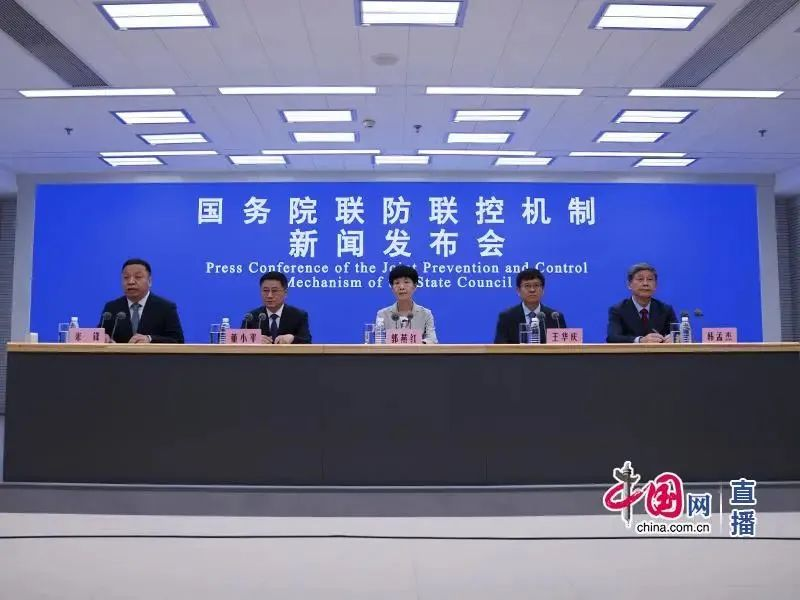At the press conference of the Joint Prevention and Control Mechanism of the State Council held on August 10, relevant departments and experts made authoritative interpretations of hot issues such as the current epidemic situation and the characteristics of the new Omicron variant.

01New requirements for nucleic acid testing - "Ten Fast"
It was mentioned at the meeting that the Omicron variant spreads rapidly, so all prevention and control measures are to race against the virus, and make speed as the work requirement of the whole process of epidemic disposal. The meeting also proposed to decompose the fast word into each key process and link of the work, and summarized the "ten fast", that is, fast sampling, fast sample delivery, fast detection, fast chasing the sun, fast flow adjustment, fast investigation, fast transportation, Fast isolation, fast diagnosis, fast reporting.
Nucleic acid testing is an important method for early detection of cases. It is necessary to strengthen overall planning, mobilize resources for nucleic acid testing, and fully promote the improvement of nucleic acid testing capabilities, so as to lay the foundation for completing a round of nucleic acid testing for all employees in the shortest time with high quality.
Taking the outbreaks in Anhui, Gansu and Guangxi as examples, these regions have completed a round of high-quality nucleic acid testing within 24 hours. A spokesperson at the meeting stated that in order to greatly improve the detection efficiency, the above-mentioned regions have adjusted the nucleic acid detection methods in high and medium-risk areas:
High-risk areas: take door-to-door sampling, one tube per household or one tube per person;
Medium-risk areas: adopt 1:5 mixed inspection, and appropriately reduce the 1:10 mixed inspection ratio.
In this way, the infected person can be detected as soon as possible in a short time, and the detection efficiency can be improved. This is also an important experience in these several epidemics, that is, the word "fast" is highlighted in the detection. As for the follow-up flow investigation, isolation and transportation, etc., the word "fast" can be highlighted simultaneously only if the detection is carried out in parallel on the basis of fast detection.
The meeting emphasized that it is not only necessary to ensure the quality of nucleic acid testing, but also to ensure that no one person or one household is missed. Through rapid detection of positive infected persons, the risk of social transmission can be controlled in time.
More than 20,000 medical and health personnel support Hainan
Mi Feng, a spokesman for the National Health Commission, said that at present, the epidemic in Sanya, Hainan is still at a high level of progress. The epidemic situation in Xinjiang, Inner Mongolia, Guangdong and other provinces is still in the stage of rapid development, and there is a certain risk of social transmission. Lhasa, Shigatse, Ali and other places in Tibet have recently reported new local epidemics, and the risk of spread is relatively high. The local clustered epidemics that occurred in Gansu, Guangxi, Shandong and other provinces in the early stage have been effectively controlled.
In order to control the epidemic as soon as possible, the national level has increased its support for Hainan. Guo Yanhong, Inspector of the Medical Administration and Hospital Administration Bureau of the National Health and Health Commission, said that the comprehensive team of the Joint Prevention and Control Mechanism of the State Council sent a working group to Hainan to guide and station to support the epidemic prevention and control work. At the same time, the national medical force and nucleic acid testing resources were quickly coordinated.
"We have dispatched more than 10,000 medical and health personnel from 19 provinces across the country to support Hainan, dispatched nearly 8,000 testing personnel, sampling personnel and related testing equipment, and increased the nucleic acid testing capacity of Hainan Province to 2.4 million tubes per day. "Guo Yanhong said.
According to reports, the working group also instructed Hainan to do door-to-door sampling in high-risk areas, and conduct single-person, single-tube and one-household, one-tube testing. Medium-risk areas are tested according to 1:5 mixed tube testing, and 1:10 mixed tube testing is reduced as much as possible. At the same time, it guides the local area to improve the efficiency of epidemic disposal, so as to ensure that all inspections should be carried out, all quarantines should be carried out, all should be collected, and all should be treated.
Regarding the recent local epidemic in Tibet, Guo Yanhong introduced that the Tibet Autonomous Region has actively promoted all aspects of preparations for epidemic disposal in accordance with the unified national deployment and requirements. National experts in control and other fields went to Tibet to guide epidemic prevention and control. Through comprehensive inter-provincial counterpart support, Tibet can also apply for medical and epidemic prevention and control support from relevant provinces. Therefore, Tibet is capable of coping with the current epidemic.
03Will the health codes be recognized nationally after the mutual recognition of nucleic acid results?
Recently, the Joint Prevention and Control Mechanism of the State Council issued a document requiring the national mutual recognition of nucleic acid test results. Has it been effectively implemented since the document was issued? After the mutual recognition of nucleic acids, will the health code be recognized nationally?
Mi Feng said that since the announcement of the national mutual recognition of nucleic acid test results for the new coronavirus was issued, various localities are rapidly organizing and implementing them.
For example, some places have added the function of querying nucleic acid test results from other provinces and cities and uploading them to the health treasure, some have launched related services of nucleic acid information, and some can switch between the nucleic acid test databases in the province and the whole country at any time. These practices are all for the convenience of the masses, and now it seems to be progressing smoothly. If the nucleic acid results are not mutually recognized, they can be reported through the joint prevention and control mechanism of the State Council and the public message boards set up in various places. The media is also welcome to further supervise the implementation.
He also said that in the next step, the timeliness of information sharing will be further improved, the management of health codes will be optimized and improved, and the safe and orderly travel of the masses will be more convenient.
04New variants bring challenges but can still deal with them effectively
Recently, Omicron BA.5 strains and their evolutionary branches have been detected in many places in my country. How to effectively prevent and control?
According to Dong Xiaoping, chief expert of virology at the Chinese Center for Disease Control and Prevention, domestic and foreign studies have shown that compared with other Omicron variant strains, the epidemiological and transmission characteristics of the Omicron BA.5 variant have not changed substantially, but immune escape capacity enhancement. At present, all localities are in accordance with the requirements of the new version of the prevention and control plan, based on rapid and accurate risk management and control, and actively respond, almost every epidemic can be effectively controlled in a short period of time, which also reflects the ninth version of the prevention and control plan. The Mikron variant works well.
"The primary key element in the handling of the epidemic is 'early detection'." Dong Xiaoping said that the ninth edition of the prevention and control plan requires eight categories of multi-channel monitoring and early warning, including human, material, and environment, and pays attention to the monitoring and traceability of new mutants. . This version of the plan more prominently reflects the concept and measures of precise and scientific prevention and control, adheres to the general policy of "dynamic clearing", and puts forward higher requirements for the implementation of various normalized measures and the quality of work.
Wang Huaqing, chief expert on the immunization program of the Chinese Center for Disease Control and Prevention, said that the vaccines currently used in my country are significantly and clearly effective in preventing severe illness and death. At present, the epidemic is still seriously harmful to the elderly, especially the elderly who have not been vaccinated. It is recommended that the elderly who meet the requirements get vaccinated as soon as possible, and complete the booster vaccination according to the prescribed interval.

